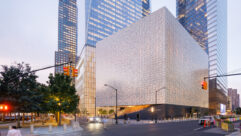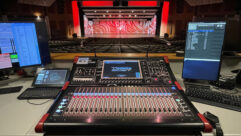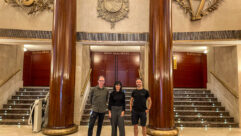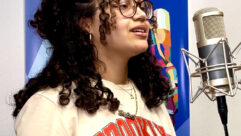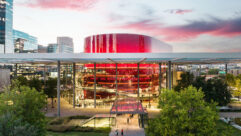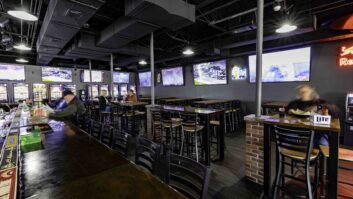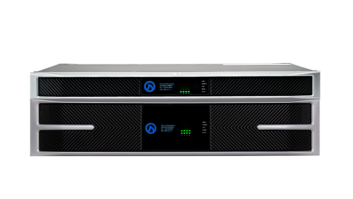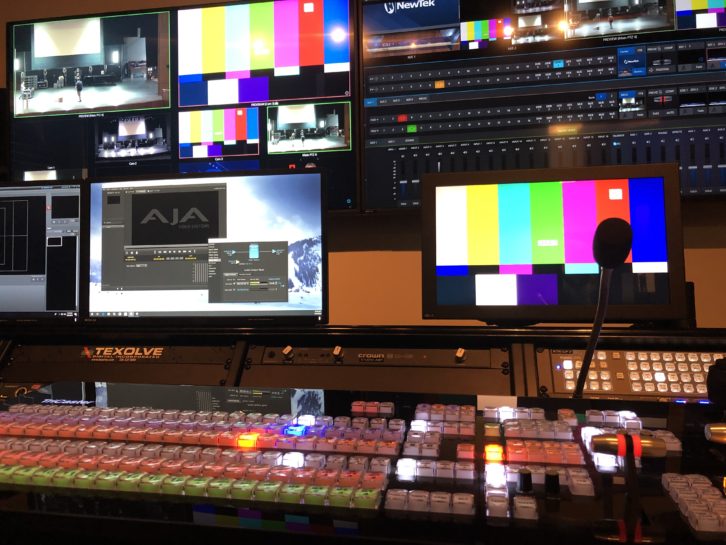
At the Lincoln Park Performing Arts Charter School in Midland, Pennsylvania they needed to upgrade their entire campus-wide video and sound systems to modernize their instruction in media arts. The school called in Texolve Digital from the Pittsburg area to handle the whole project. Texolve’s Brian Geuptner is here to talk about it.
SVC: First tell us a bit about Texolve Digital. We haven’t had you on the show before so catch us up.
Brian Geuptner: Sure, sure. We’re mainly a broadcast systems integrator. We’re located just outside of Pittsburgh. We do design and consultation, we’re an equipment service provider, we even have a repair and maintenance shop. Some of our ongoing clients include local sports teams like the Pittsburgh Pirates, the Steelers, the Penguins, University of Pittsburgh. We have an engineer at the events for them in their facilities at PNC Park, Heinz Field, PPG Paints Arena and the Petersen Events Center at the University of Pittsburgh. So we’re their engineering provider for the live events; just kind of act as a triage nurse of sorts. If there’s anything going wrong with the system we help diagnose it, make sure that their scoreboard show goes off without a hitch. Besides engineering services, we work with a Big Ten network. Our warehouse is the field shop for their mobile acquisition trucks, so they come in from time to time. We do some repairs, some system upgrades, maintenance on their trucks. We also recently installed a IPTV system at their facility in Chicago. Not too long ago we finished more of an AV type of project at the University of Pittsburgh within the Petersen Events Center. We built a small media press room that has ties back to their main system and their control room. Another project we recently finished was a studio at the Pittsburgh Steelers practice facility. So they do a coaches’ show from there; they basically renovated the entire space and we worked in the control room and studio and got them all set for the new season.
Your outfit was chosen to renovate an entire campus-wide sound and video system at the Lincoln Park Performing Arts Charter School. Tell us about that.
Sure, yeah. The Lincoln Park Performing Arts Charter School, it’s about an hour from Pittsburgh in a town called Midland, PA, and students go there to focus on performance arts. They have a theater department, a dance department. They can take music classes, media arts – really any type of creative arts, students go there to focus on those types of curriculum.
 And they came up with a top of the line performing arts center right there in the middle of blue collar steel country.
And they came up with a top of the line performing arts center right there in the middle of blue collar steel country.
[Chuckles] That’s right. Yeah.
What was the scope of the project for the Lincoln Park Performing Arts Charter School? What did they want to do with this new campus-wide HD video system?
They needed to upgrade. It was an SD facility for a long time. There were a few pieces of equipment that we were able to repurpose but most of it had to go away. I think we reused the racks and the console and some Shure microphones but besides that we had to basically rip all the old stuff out. They wanted to offer students a way to get relevant broadcast experience that they could use in the future; they could go right from their school to work in the broadcast industry. The other thing is they wanted to leverage other facilities that they have including a performance hall. This new system gave the students a place to learn how to do aspects of a live production while their fellow students were performing. Recording this and streaming these performances was a big request of theirs and that was important to them–not just for family members who couldn’t be there, but also for archival purposes. And another thing that they were interested in was being able to tie the entire campus together and providing connectivity to all these other locations.
That would sure save a lot of hauling mobile equipment around the campus.
True, true. Yeah. The other thing is they have a media lab where they do Adobe Creative Cloud work in video editing and graphic editing. So they wanted to have a type of shared storage system with an asset management system just so they don’t have to plug in USB drives or shuffle drives around. They wanted a centralized media hub of sorts that was centered around some kind of shared storage to contain all of these assets.
What are the specific capabilities as far as audio, video switching and studio size that you gave them in the project?
In the control room they wanted to create multiple teachable positions so we installed a NewTek TriCaster TC1 switcher that they’re able to record and stream on. There’s the Live Tech CGE software actually installed in a separate computer to create a CG position. There’s a teleprompter position, there’s a camera shading position. They wanted the flexibility to move the students around and teach them different aspects of production. Besides being able to record and stream through the productions and the camera isolations all the camera feeds in the building and on the campus, they eventually go back to the router. Whether they’re in the studio or whether they’re the PTZ cameras in the theaters they all go back to the AJA KUMO router eventually. From the router they can either record to the EditShare through the TC1, or there’s an edit PC workstation in the control room as well. It has an AJA KONA card in it. Or, in addition there’s an Atomos Shogun Studio recording device that we put in as a backup or as an alternate if they don’t want to have to utilize the rest of the system. Basically, they can use and manage just about all of the equipment in the system from the control room whether it’s located in one of the theaters or local. We have an AJA Frame Sync in the system. We have a Cobalt openGear frame for any audio and video DAs. There’s IFP for the talent to talk to. And then going back to the TC1, with NDI they can easily add more sources; expand it however they want.
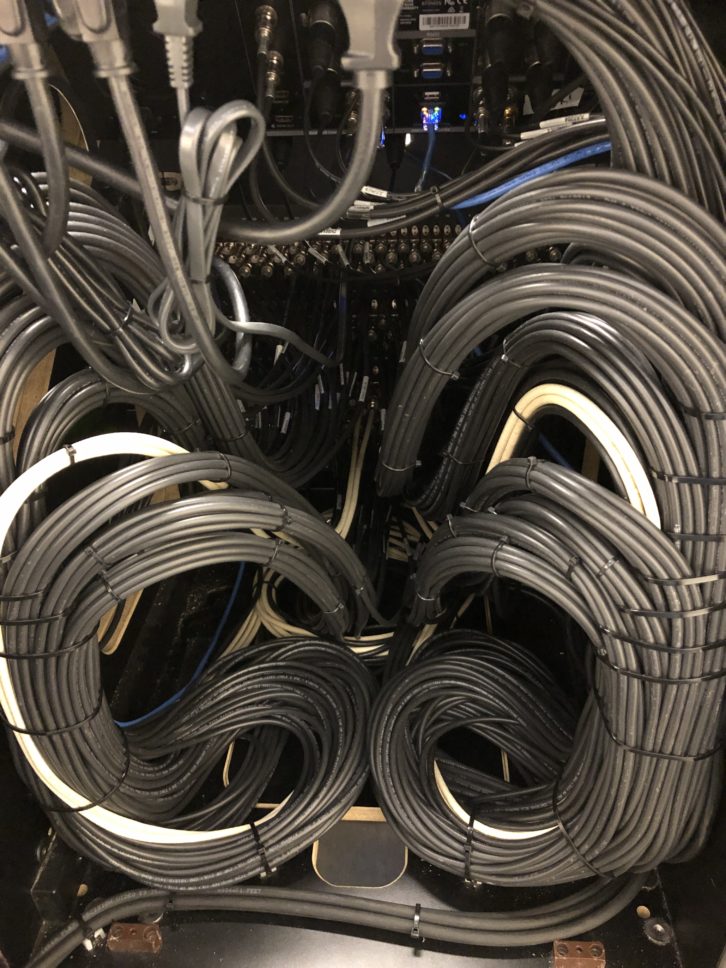 All native IP work flow, no transcoding or signal conversion. I think that NewTek TC1 is a 16-input switcher?
All native IP work flow, no transcoding or signal conversion. I think that NewTek TC1 is a 16-input switcher?
Yes.
So they’ve got plenty of capacity and room to expand and add a few things.
And they can add computer sources easily as well.
Does the EditShare system do automatic cataloging of things on the video and sound recordings?
It does, yeah. We installed the EditShare in a rack; it’s near the control room. All of the hardware that we wanted to be able to access is directly connected to the switch. It’s a 10-gig switch. We used CAT-6a cable to the EditShare switch and that includes – the media lab across the hall that they use for Adobe. We ran CAT6a directly back to the switch and within the EditShare there’s actually a way to modify the media spaces. You can basically modify them to enable direct recording from the Newtek switcher directly to the EditShare, so they play nice together. And once the media is recording to the EditShare it creates a low-res proxy file of that media and it creates a catalogue of assets that is searchable. You can add metadata tags to them. It makes it much easier to find and retrieve items.
That’s great for assembly of highlight reels, promos from stored footage and really speeds things up
Exactly. And the students can easily locate their own footage. You can even do simple edits within the Flow Browse application of the EditShare. So not only are you able to search and find assets, you’re able to manipulate them as well and create small sequences and things like that.
So let’s talk about live. How do they communicate during their productions? Did you install an intercom system for them?
We did. We went with the Clear-Com FreeSpeak II system. The CCU’s and the cameras are wired to it. The rest of it is all wireless, so we use their splitter and antennas to be able to reach the other locations. The theaters are down the hall from the studio and the control room. The Clear-Com antennas got great reception throughout the building. The CCUs are wired to the FreeSpeak system. The rest of it’s all wireless to belt packs.
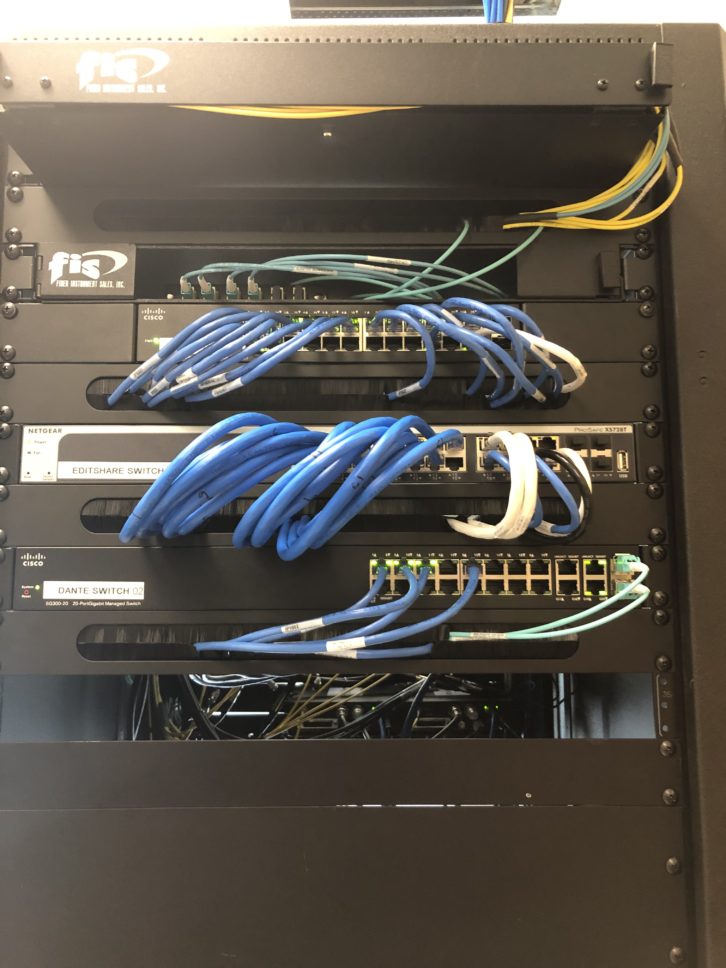 I think you used the Sony BRC-H900 PTZ cameras to go into the venues. There are a lot of PTZ cameras out there. Why did you go with those?
I think you used the Sony BRC-H900 PTZ cameras to go into the venues. There are a lot of PTZ cameras out there. Why did you go with those?
Well we’ve had good luck with the BRCH900 Sony cameras and we use the IP control interface cards to be able to control them via RM-IP10 remote controllers. We have one controller locally in the main theater and we have another controller back in the control room across the building and they’re able to do whatever they need to do with that camera from either location, so they don’t even have to be in the same room. As far as going with the Sonys, they actually saw the studio cameras they selected, the HXC-FB80 cameras, at NAB one year and they were very happy with the performance and the features the Sony cameras offered. And they wanted to keep everything consistent image quality-wise so they decided to keep it in the Sony family. And the learning curve is – it’s much easier to teach on something that you’re already familiar with.
What about the sound part of this thing? What are the capabilities of the Dante-enabled SSL mixing console you put in for them?
In using Dante it enables them to share audio between the theaters even to another building – it’s called Alumni Hall – on the same campus, and they can distribute the audio around the facility. We used fiber between the rooms and between these buildings on the campus to expand the Dante network and those devices all talk to each other. All the audio can be transmitted back to the control room or to the other locations and there’s a workstation in an audio suite where the SSL mixing console. So that all talks to the EditShare as well so they’re able to use all of their video and audio tools together. The Dante just gave us the ability to expand it and share it everywhere.
And as for all of the fiber links that you have between the venues, the control room and the editing gear, that was done with MultiDyne fiber transmitting and receiving units. You had a pretty wide selection there as well.
One reason we went with MultiDyne for the fiber conversion, they’ve been reliable for us and we’ve installed their products in other locations and have always been happy with it. One of the devices we used, it’s a PTZ transmitter and receiver kit and it gives you everything you need to get video control over one fiber.
And as we said, this was an upgrade of an existing facility so did you have to jockey around classes? What was your timeline on it?
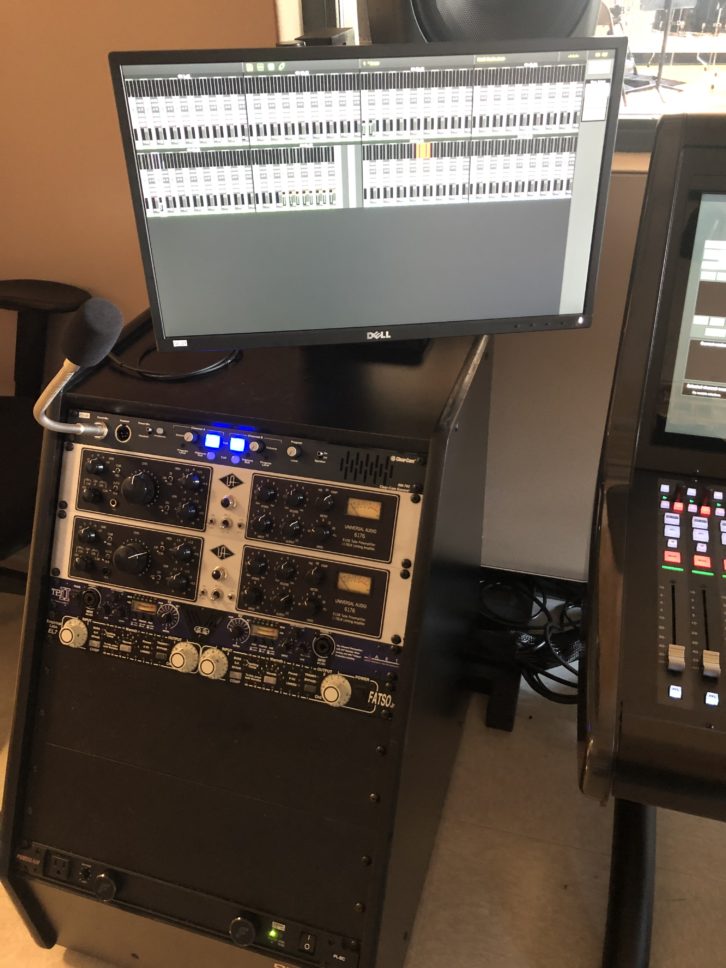 [Chuckles] This was a long project. We actually presented them with an initial design and some consultation services in the winter of 2016. So this project was like a cat–it was alive and dead many, many times. From the initial design we helped them create a budget. They had to get that approved, so we continued working with the representatives of the school off and on throughout the process. We delivered the final system about two-and-a-half years after we started. A few times we had to work in the evenings and there were some long cable pulls that we had to do throughout the building, so we waited until the students left to do that kind of stuff. A lot of it actually fell in the summer so we were able to do a lot of the installation work without being in the way
[Chuckles] This was a long project. We actually presented them with an initial design and some consultation services in the winter of 2016. So this project was like a cat–it was alive and dead many, many times. From the initial design we helped them create a budget. They had to get that approved, so we continued working with the representatives of the school off and on throughout the process. We delivered the final system about two-and-a-half years after we started. A few times we had to work in the evenings and there were some long cable pulls that we had to do throughout the building, so we waited until the students left to do that kind of stuff. A lot of it actually fell in the summer so we were able to do a lot of the installation work without being in the way
Was there any one part of it that was especially challenging or difficult?
Besides the long approval process, I mean we ran into a few obstacles, literally, on some of the long cable paths. I mean you never know what you’re going to find in a ceiling or in a wall. There were a few obstructions we had to work around but overall once we got moving on the project it came together pretty nicely.
When it came to the training of the students and faculty, did Texolve get into the training on the various components of this?
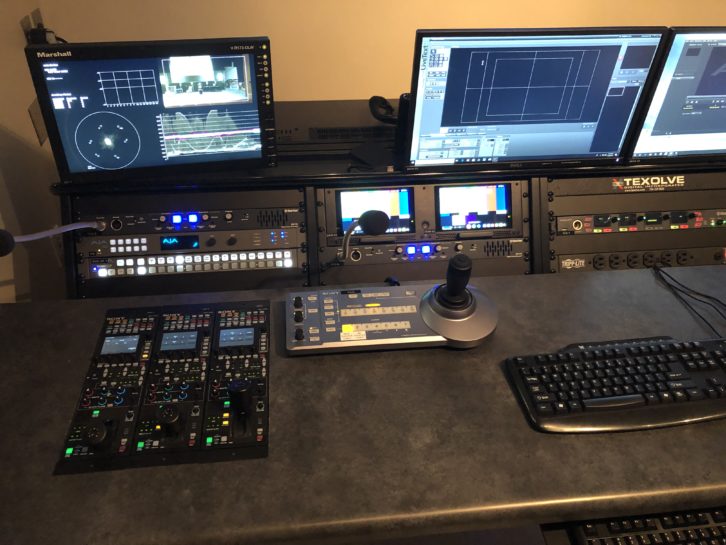 Once the system was installed and we tested and commissioned it we did do some overview training for the staff so they know why it was designed the way it was and what it’s capable of and how to route the signals or how to map any feeds they need. Once the instructors were comfortable with how to use it we relied on the manufacturers for some specific expertise and support. SSL came in and did some commissioning and training on the audio console. And EditShare came in and sat with the instructors to go over some of the advanced asset management and the system administration settings and just to give everybody some more specific understanding of how everything works. We went with some big name manufacturers here in order to provide the best professional overall product and support that we could
Once the system was installed and we tested and commissioned it we did do some overview training for the staff so they know why it was designed the way it was and what it’s capable of and how to route the signals or how to map any feeds they need. Once the instructors were comfortable with how to use it we relied on the manufacturers for some specific expertise and support. SSL came in and did some commissioning and training on the audio console. And EditShare came in and sat with the instructors to go over some of the advanced asset management and the system administration settings and just to give everybody some more specific understanding of how everything works. We went with some big name manufacturers here in order to provide the best professional overall product and support that we could
It’s got to be great to go back in there and see the students actually using the system and really getting something out of it.
Yeah, it is. I think they’re going to be able to use it for a long time and I think they’re very happy with it. We provide additional support for them. Once we install it we’re not gone. We come back occasionally to check in on it. We provide after-installation support. We answer questions and just help guide them as much as we can so that the instructors and the students can get the most out of it.
So what does Texolve Digital has coming up as far as projects coming down the line.
We are currently designing a system for Fox Sports Midwest. It’s a regional Fox Sports facility in St. Louis. We worked on some projects with them at their facilities in Cleveland and Cincinnati and Detroit over the past few years so we’re working on a design for that now and we’re hoping to start the integration in probably winter or spring. We’re also going to be expanding the IPTV system at the Big 10 facility in Chicago and we’re hoping to get a green light on a project at a worship facility as well. So a couple of big projects coming up and we should be pretty busy.


